Questioning the Constitutionality of the Wagner Act
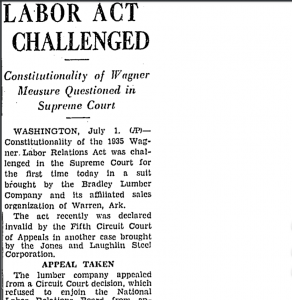
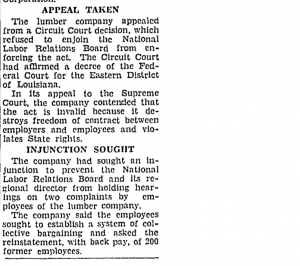
This news article in the Los Angeles Times was published on a Thursday morning, July 2nd, 1936. This newspaper is published in Los Angeles, California. The article has an intended audience of all that read the Los Angeles Times because of how widespread its reach to citizens is. Its purpose is to inform as many people as possible that read this news print of the Wagner Act being questioned in the Supreme Court by the Bradley Lumber Company. Some of the key points in this printing is that the “Wagner Labor Relations Act was challenged- in a suit brought by the Bradley Lumber Company and affiliates.” As well as that the Wagner Act was invalid. The “Labor Act Challenged “article connects to my theme because it is documenting one of the issues that companies had with this labor act.
Fair Labor Standards Act Overview
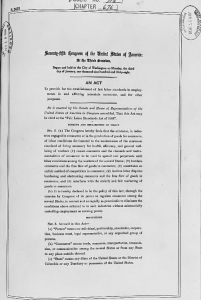
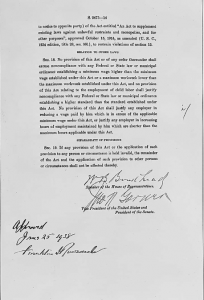
The Fair Labor Standards Act of 1938 was a part of Franklin D. Roosevelt’s New Deal plan proposed shortly after the Great Depression. It was approved and signed by both the speaker of the House of Representatives, William Bankhead and the president of the Senate/ Vice President of the United States, John Nance Garner. One of this act’s focuses is towards those who experience low pay and extended working hours without adequate compensation for that overtime. Section 18. states “No provision of this act shall justify any employer in reducing a wage paid by him which is in excess of the minimum wage stated under this act, or justify any employer increasing hours of employment maintained by him which are shorter than the maximum hours applicable under this Act.” There are several main points in the Fair Labor Standards Act that refer to commerce and the negative effects of low wages. The act states in section 2. (b), “It is hereby declared to be the policy of this Act, through the exercise by Congress of its power to regulate commerce among several States, to correct and rapidly as practically to eliminate the conditions above referred to in such industries without substantially curtailing employment or earning power.”
The Signing of the National Labor Relations Act
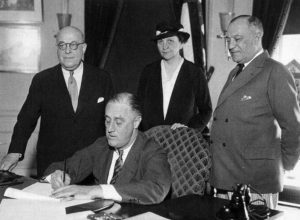
The National Labor Relations Act was enacted by Congress in 1938. This is also known as the Wagner Act because it was created by Robert F. Wagner. The intended audience of the National Labor Relations Act are those who attempt to unionize and speak out against unfair working conditions, hour, and wages. The purpose of this source is to allow workers to form unions and have the ability to negotiate terms and agreements with their employers. Key points in the Wagner Act are those that propose the legal right to unionize for most workers. An issue of this is that it excludes farmers. The Wagner Act allows workers a legal right to create unions which can be very beneficial in scenarios such as these.
